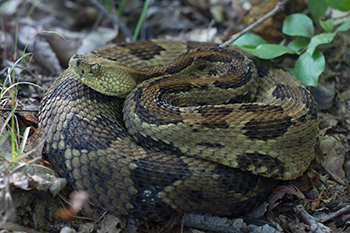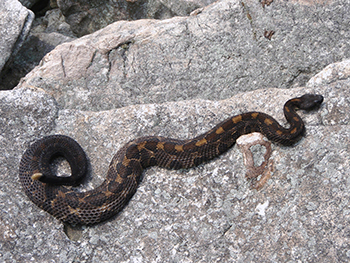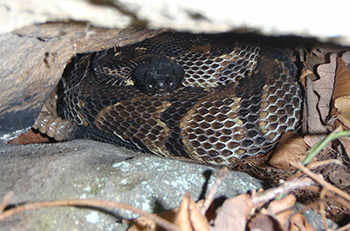Home → Fish & Wildlife → Wildlife → Species Information → Reptiles & Amphibians → Timber Rattlesnake
Timber Rattlesnake
Crotalus horridus
On this page:

Photo: Derek Yorks
Distinguishing Characteristics

Photo: Trevor Persons
- Large and heavy-bodied, approximately 36 to 52 inches in length
- Wide, triangular head
- Yellowish, gray, brown, or black above with darker blotches or bands
- Underside plain yellowish, sometimes with dark flecking
- Rattle on tail
- Dorsal scales keeled (longitudinal raised ridge along midline of each scale)
- Commonly confused with eastern milksnake
Status and Distribution in Maine
- Extirpated (native populations removed) from Maine
- Formerly southern region only
Habitat

Photo: Trevor Persons
- Upland hardwood forest
- Rocky, brushy south-facing hillsides
Diet
- Primarily eats small mammals such as mice and chipmunks
Seasonal Changes
- Hibernates communally deep within rocky south-facing hillsides
Natural History Notes
- Venomous
- Heavily persecuted by early New England settlers, last seen in Maine ca. 1860
- Live-bearing, females from northern populations only breed every 3–4 years